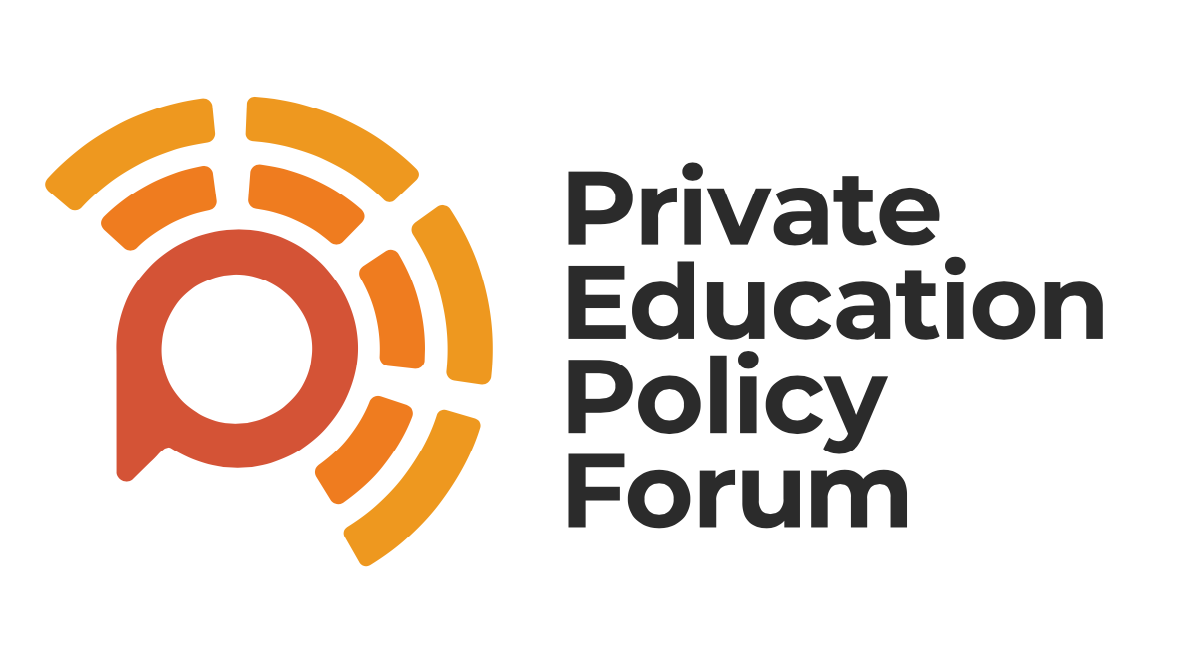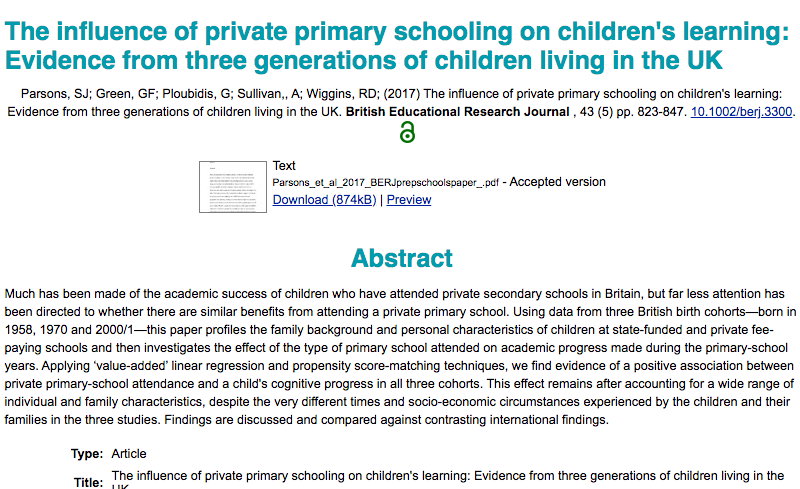

Title:
The influence of private primary schooling on children’s learning: Evidence from three generations of children living in the UK
Authors:
Parsons, S., Green, F., Ploubidis, G.B., Sullivan, A. & Wiggins, R.D. British Education Research Journal, October 2017, 43(5), 823-847.
WHAT’S IT ABOUT?
While attention is often given to private secondary schools and how their students get on in exams and later in life, the spotlight rarely falls on younger children.
This paper studied whether it makes a difference to the educational progress of primary-age children to attend a prep school instead of a state primary school.
METHODOLOGY
The study used data from surveys of three cohorts of children brought up in Britain. The first cohort of children were born in 1958, the second in 1970, the third in 2000-2001. The parents and, when old enough, the children were interviewed regularly during their childhood.
The children completed cognitive assessments in reading and maths at the start of primary schooling, and then again at the age of 10 or 11. The assessment scores were formed into rank points, running from 1 to 100. The difference between the scores signalled the value added for each pupil.
The study compared the value added on average among the children at private and state schools.
A notable feature of the study is that the social and economic background could be measured in great detail, enabling the study to take the best possible account of the differences between private and state school children.
WHAT ARE THE FINDINGS?
-
·The value-added reading scores for prep school pupils were higher than for similar state school pupils in all three cohorts. For example in the 2000-2001 cohort, in prep schools the value added in reading scores were on average six rank points higher than in state schools.
-
The value-added maths scores for prep school pupils in the 1958 cohort were the same as for similar pupils in state schools. But in the 1970 cohort the value-added maths scores were higher by eight rank points than for state school pupils.
-
Both private and state schools have evolved since the 1960s. But the performance gap in reading was no larger in the 2000 cohort than in the 1970 cohort.
Children carry these modest but significant cognitive gains made in resource-rich private schools into the start of their secondary schooling.
This helps them to begin that much ahead of similar children going through the state sector.
WHAT ARE THE LIMITATIONS OF THIS RESEARCH?
The study did not directly investigate the reasons for the greater value added in prep schools. However, it points out that the differences in resources available in prep and state primary schools is a factor of about three to one.
Broader outcomes, beyond just cognitive development, are not covered in the study.
Explained by: Francis Green, Professor of Work and Education Economics at UCL Institute of Education.




